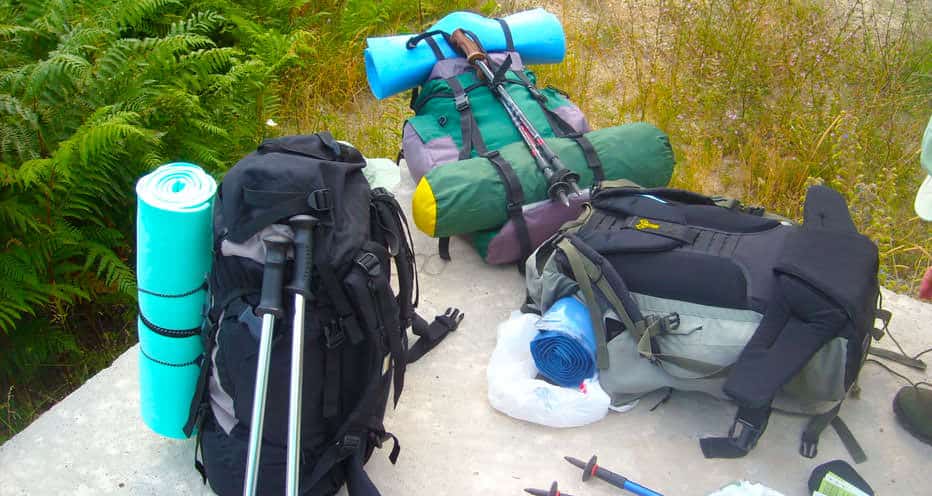
Essentials: boots, waterproofs & a warm hat
The most important thing to take is good quality three-season walking boots. It doesn’t matter if they are leather or fabric, but they need to fit perfectly and be worn in: if not, you will get blisters and this is very likely to ruin your trek.
The second most important bit of gear is good quality waterproof jacket and trousers. As with boots, it is false economy to go cheap. If you find yourself in a heavy rain storm cheap waterproofs, like a pac-a-mac or poncho, will be useless. And if it is cold – which is highly likely at the mountain passes – it can be very dangerous. Most people are aware of Gore-Tex, but there are lots of other materials used to make high-quality waterproofs. You can also get plenty of information on the internet about which waterproofs are the best for your needs. If you need to economise, then do so on the waterproof trousers – a simple pair of non-breathable waterproofs would be OK if you only use them occasionally.
Sun hat, sun cream and sun glasses are really important as the sun is very intense – particularly as you climb to higher altitudes. It is very easy to get sun-stroke if you don’t cover your head.
Lastly is a warm hat and gloves. Hopefully the weather will be fine and you will complete the TMB in shorts and T shirts. However, if the weather comes in you need to be prepared: it can turn very cold very quickly and even in August it is not unusual to find snow at the passes after a frontal rain storm.
Recommended equipment: it doesn’t have to be expensive
Layered clothing is generally seen as the most sensible way to dress. It may be chilly when you first set off (it is not uncommon to be 7 degrees centigrade in the early morning) and yet within half an hour you will have warmed up and stripped off. However, as you ascend towards the mountain passes the air temperature will cool down. A mixture of T shirts, long-sleeved T shirts, fleece, walking trousers and shorts will be fine. You can spend a lot of money on high-tech breathable fabrics that wick your sweat away, but truthfully it is not essential and you could happily do the TMB in a shirt and warm jumper from a high-street shop.
Other stuff
A rucsac needs to be 30-40 litres and you are better having the 40 litre sac if you are doing one or two nights without your main luggage. This would be regarded as light backpacking and you just need to carry toiletries, a spare set of underwear, socks and T shirt in addition to your normal daily pack.
Other gear to consider would be walking poles, which are particularly useful in the early season when you may have to cross old winter snow that is still lying around. You will need a water bottle and two litres is best. A small first aid kit and any personal medicine. If your main luggage is being transferred from hotel to hotel then you can afford to take more, such as more clothes and sandals or training shoes for the evenings.
Laundrettes and what not to take
There are no laundrettes on the route, apart from in Chamonix so you will need to either bring lots of spare clothes or do some washing in the hotel basin.
You should not need a down jacket as the temperatures do not drop too low at night, though some people like thin goose-down gillets which can be nice to wear in the evening. If on a Guided trek, the leader will have a First Aid Kit, emergency shelter and mobile phone and so you don’t need to bring these. Hotels provide towels and bedding. In the refuges they provide duvet covers and pillow, but not towels.
Essential
- Good quality three-season walking boots
- Good quality waterproof jacket and trousers
- Sun hat, sun cream, sun glasses
- Warm hat and gloves
Recommended
- A range of walking clothes
- A good quality 30-40 litre rucsac
- 2 litre water bottle
- Small torch
- Toiletries
- Sandals or training shoes for the evening
- Blister kit, personal medicine
- Camera
- Walking poles
- Map, compass, waterproof map case
- Mobile phone
 Tour du Mont Blanc
Tour du Mont Blanc